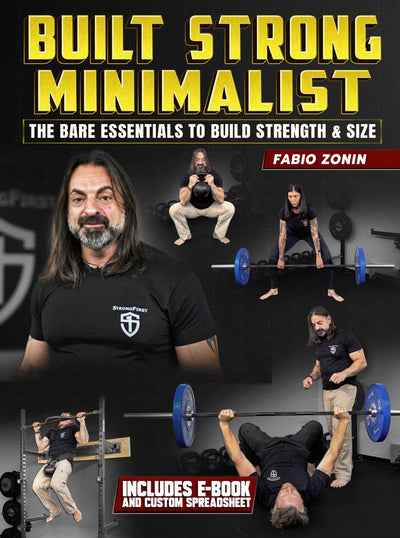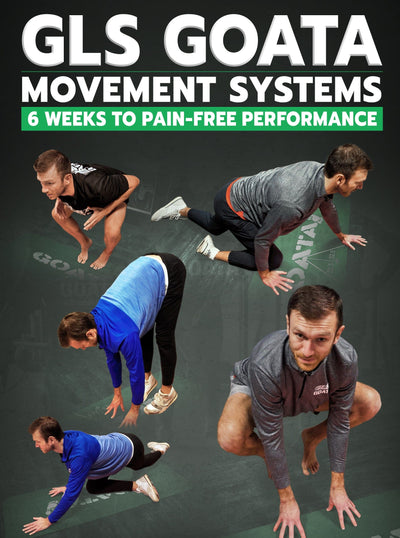Kettlebell Deadlift Row
In the realm of functional training, kettlebells have gained immense popularity due to their versatility and ability to engage multiple muscle groups simultaneously. One such exercise that combines strength, stability, and coordination is the kettlebell deadlift row. By integrating the deadlift and rowing movements, this exercise provides a full-body workout while targeting specific muscle groups. In this blog post, we will explore the kettlebell deadlift row and delve into key variations, including the kettlebell suitcase deadlift, sumo deadlift kettlebell, kettlebell sumo deadlift high pull, double kettlebell deadlift, and banded kettlebell deadlift.
What this article covers:
- Kettlebell Suitcase Deadlift
- Sumo Deadlift Kettlebell
- Kettlebell Sumo Deadlift High Pull
- Double Kettlebell Deadlift
- Banded Kettlebell Deadlift
The kettlebell deadlift row is a highly effective exercise that combines the deadlift and rowing movements, providing a full-body workout while targeting specific muscle groups. To perform the kettlebell deadlift row, start by standing with your feet shoulder-width apart, toes slightly pointed outward. Place the kettlebell on the floor between your feet, and engage your core while maintaining a neutral spine. Bend your knees slightly, hinge at the hips, and grasp the kettlebell handle with one hand using an overhand grip.
As you initiate the movement, drive through your heels and lift the kettlebell off the ground, extending your hips and knees. This deadlift portion of the exercise primarily engages the glutes, hamstrings, quadriceps, and core muscles. Once you have lifted the kettlebell to a standing position, focus on the rowing motion. Engage your back muscles, retract your shoulder blades, and pull the kettlebell towards your body while keeping your elbow close to your torso. Squeeze your back muscles at the top of the movement.
Lower the kettlebell back to the starting position with control, reversing the rowing motion and maintaining a neutral spine as you hinge at the hips. Repeat the movement for the desired number of repetitions, then switch to the other hand. The kettlebell deadlift row offers several benefits. Firstly, it engages multiple muscle groups, including the glutes, hamstrings, quadriceps, back muscles, and core. This compound exercise helps develop overall strength and functional movement patterns.
Kettlebell Suitcase Deadlift
The kettlebell suitcase deadlift is a fundamental variation of the kettlebell deadlift row. This exercise involves lifting a kettlebell from the ground while maintaining a neutral spine and a balanced stance, mimicking the action of picking up a suitcase. It primarily targets the posterior chain, including the glutes, hamstrings, and lower back, while also engaging the core muscles for stability.
Sumo Deadlift Kettlebell
The sumo deadlift kettlebell variation utilizes a wide stance with toes pointed slightly outward, similar to the sumo wrestler's stance. This stance allows for a deeper squat position and emphasizes the muscles of the inner thighs, quads, and glutes. By gripping the kettlebell between the legs and maintaining a neutral spine, the sumo deadlift kettlebell activates the entire posterior chain while developing lower body strength and stability.
Kettlebell Sumo Deadlift High Pull
The kettlebell sumo deadlift high pull combines the benefits of the sumo deadlift with an explosive pulling motion. This movement not only engages the lower body but also targets the upper back, shoulders, and arms. By utilizing the momentum generated from the lower body, the kettlebell is pulled towards the chest, engaging the muscles of the upper body and promoting a powerful, coordinated movement pattern.
Double Kettlebell Deadlift
For those seeking to increase the challenge and load, the double kettlebell deadlift is an excellent choice. This variation involves lifting two kettlebells simultaneously, one in each hand, while maintaining proper form and alignment. The double kettlebell deadlift places greater demand on grip strength, core stability, and overall body coordination. It effectively targets the entire posterior chain and promotes symmetrical strength development.
Banded Kettlebell Deadlift
The banded kettlebell deadlift incorporates the use of resistance bands to increase the intensity of the exercise. By attaching the bands to the kettlebell and anchoring them to a sturdy object, you create additional resistance throughout the movement. This variation adds a dynamic challenge, requiring increased muscle activation and stability as you lift the kettlebell against the resistance of the band. It is an excellent option for those looking to further develop their strength and power.
The kettlebell deadlift row, with its various iterations, offers a plethora of benefits for individuals of all fitness levels. From the fundamental suitcase deadlift to the challenging double kettlebell deadlift and banded variations, these exercises engage multiple muscle groups, improve strength, promote stability, and enhance coordination. Incorporating these movements into your training routine can yield significant results in terms of muscular development, power output, and overall functional fitness.
Remember, before attempting any new exercise, it is essential to prioritize safety and proper form. Seek guidance from a qualified fitness professional to ensure you perform the movements correctly and minimize the risk of injury. So grab a kettlebell, embrace the challenge, and unlock your full potential with the kettlebell deadlift row and its exciting variations. Your body will thank you for it!
Did you find the blog beneficial? If so, consider exploring our other guides.
- Kettlebell Deadlifts
- Kettlebell Deadlift vs Barbell
- Staggered Kettlebell Deadlift
- Kickstand Deadlift Kettlebell
- Kettlebell RDL
- Kettlebell Glute Workout
- Kettlebell Swings for Glutes
- Kettlebell Glute Bridge
- How to Build Glutes with Kettlebells
- Kettlebell Leg Workout
- Single Leg Kettlebell Deadlifts
- Single Leg RDL with Kettlebell
- Kettlebell Leg Lifts
- Kettlebell Stiff Leg Deadlift
- Single Leg Kettlebell Squats





